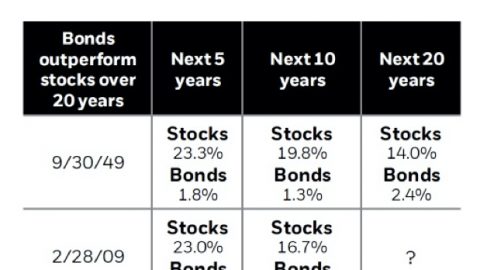Can You Time The Market?
Missing Just a Handful of the Best Days Matters Probably More Than You Think.
Written by: Allie Schmidt, Financial Advisor, CFP®, CPA

Some market pullbacks are more publicized than others. For example, the S&P 500 went down about 6.6%^ in May of this year, and we had very few clients reach out, but in August, the market declined 5.99%`, and we heard quite a bit more. This media frenzy likely related to the inversion of the 10 year and 2 year Treasury yields, but whatever the cause, it certainly struck a note with more people than before. We put out a couple articles addressing the inversion and recession fears on our blog: Addressing the Narrative of Fear and The Facts Surrounding Recessions to help give some perspective
But, investment conversations started to center around how to invest with the pending recession. Clients were asking if they should take some time out of the market to see how this whole thing pans out. Now, if you’ve had this conversation with Steve or me, you know that our response usually involves discussing how historically recessions after inversions take over a year to play out and on average the S&P 500 returns over 20% between now and then. Those comments are pretty specific to the inversion and recessions, and investors trying to time the market is nothing new, just spurred by different reasons, but almost always spike when the market is declining.
We talk a lot about averages: average returns on portfolios, average declines during bear markets, but in reality, stock market returns year to year are anything but average. If we look at the S&P 500 return over the last 20 years, on average the S&P 500 returned 9.93% per year, but those returns each year ranged from -36% in 2008 to a positive 32.39% in 2013, the closest we even got to 9.93% in one year was 10.88% in 2004*. This is all to say that markets do not return in averages, not even close, they return in clusters. A lot of those returns come at once and even all in one day in some cases, which argues the decades long point that being a buy and hold investor as opposed to market timing is profoundly important for long-term investment success.
The chart below, provided by MarketWatch, looks at what would have happened over the 20 year period of 1996-2016 if an investor stayed fully invested in the S&P 500 or if they tried to time the market over that 20 year period and, in doing so, were not invested on a handful of days. To give some perspective, there are 253 trading days in a year**, so 20 years represents 5,060 trading days. If between 1996-2016 you were out of the market for just the 5 best days, your average return goes from 8.19% (invested for the full 5,060 trading days) down to 5.99%, or 2.20% less on average every single year. It only took missing the 30 best days over that time period to actually have a negative return over those 20 years. Pretty incredible to think that just a couple days could have such a profound effect on a portfolio and more importantly a financial plan or future goal for you and your family.

To make matters even more difficult for someone trying to time the stock market is that markets tend to turn very quickly. According to JP Morgan, 6 of the 10 best days occurred within two weeks of the 10 worst days. The 10 worst days feel the worst and make people want to sell out of investments to make the pain stop, so it’s not surprising that we typically have conversations about time out of the market or waiting to invest until “things calm down” in reaction to bad days. So “waiting it out”exponentially increases the chance of being out of the market on one of those best days.
At the end of the day, it truly comes down to time in the market as opposed to timing the market. One final chart from Franklin Templeton looking at the importance of investing early and giving your investments time: you can see how the longer you invest, the more likely it is that long-term returns will be positive.

At HD Wealth Strategies, we focus on planning, risk appetite, and the ability to stay invested in a portfolio crafted to meet your long-term investment and financial planning goals. We believe in making tactical shifts to portfolios in response to economic realities and opportunities. We help to put together plans that will accomplish your long-term goals and investments that are built to weather and navigate different market conditions, not avoid them. Having a plan that you believe in is important to allow you to stay the course when times get choppy.
^ycharts.com 5.3.19 – 6.3.19
` ycharts.com 7.26.19 – 8.14.19
* ycharts.com
**Days NYSE is open to trade.
Securities offered through LPL Financial, Member FINRA/SIPC. Investment Advice offered through HD Wealth Strategies, a registered investment advisor and separate entity from LPL Financial.
The opinions voiced in this material are for general information only and are not intended to provide specific advice or recommendations for any individual. All performance referenced is historical and is no guarantee of future results. All indices are unmanaged and may not be invested into directly. The economic forecasts set forth in this material may not develop as predicted and there can be no guarantee that strategies promoted will be successful. There is no guarantee that a diversified portfolio will enhance overall returns or outperform a non-diversified portfolio. Diversification does not protect against market risk. Bonds are subject to market and interest rate risk if sold prior to maturity. Bond values will decline as interest rates rise and bonds are subject to availability and change in price.









